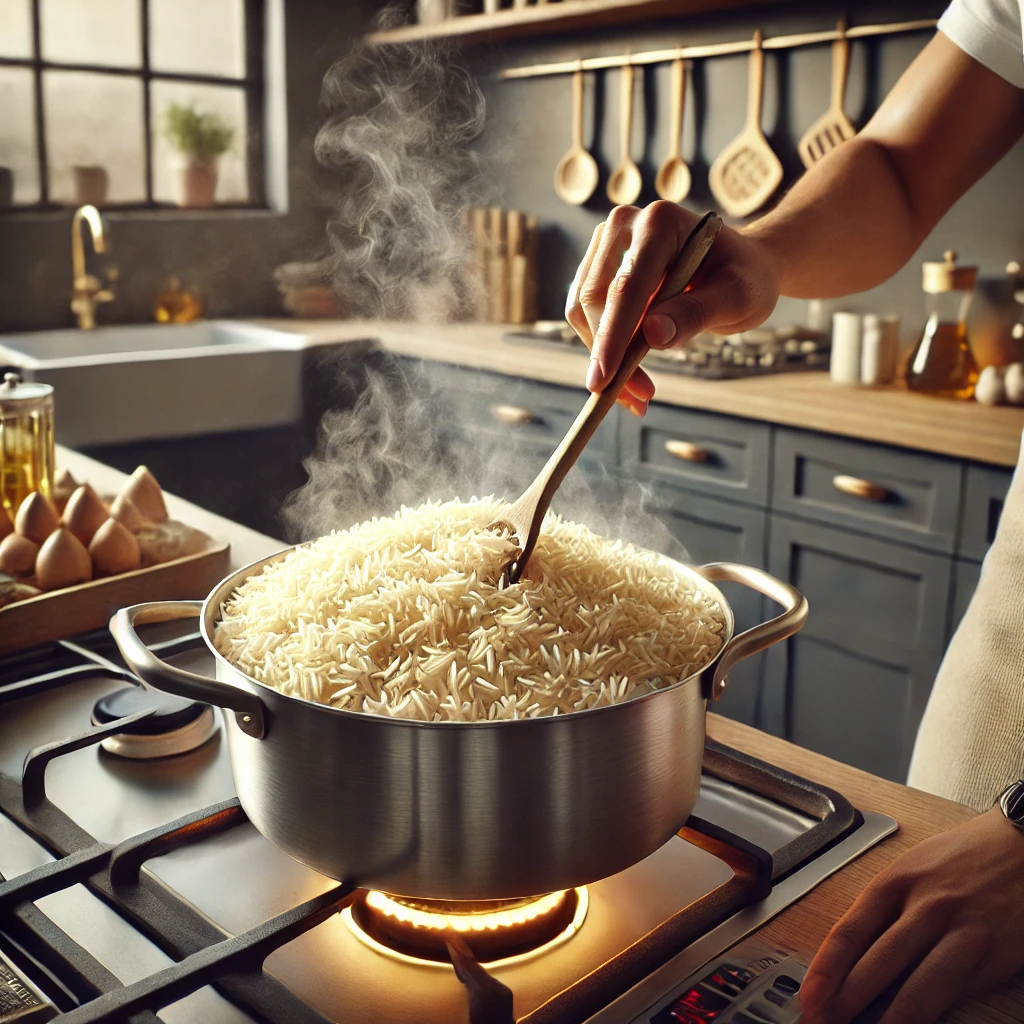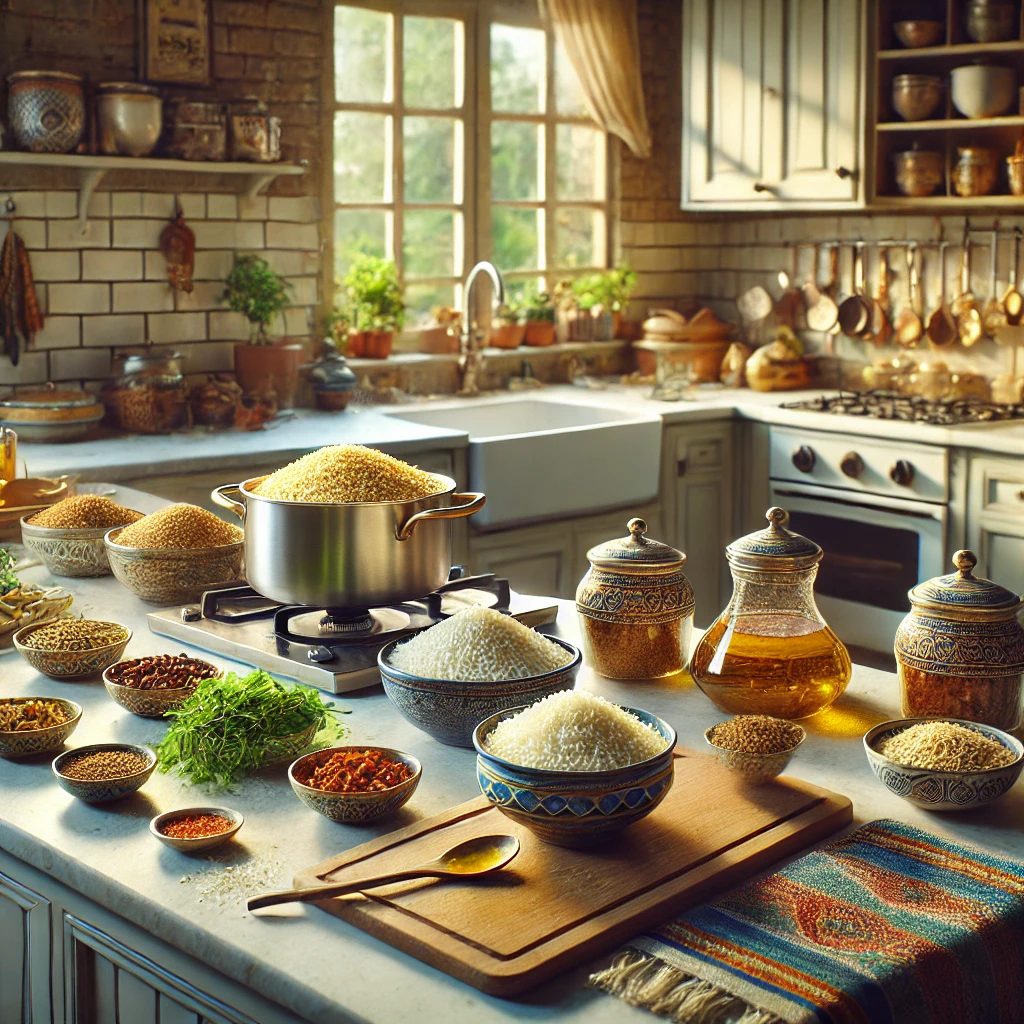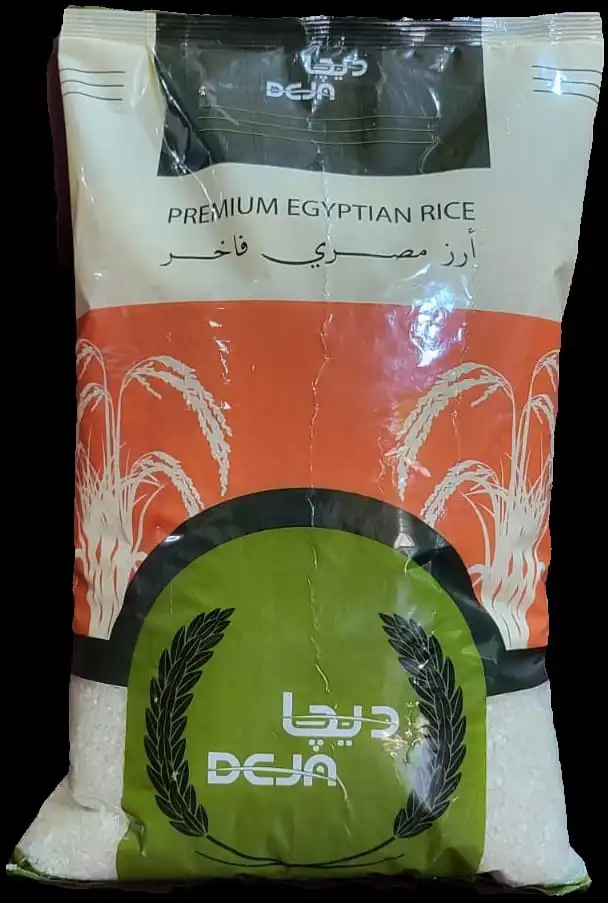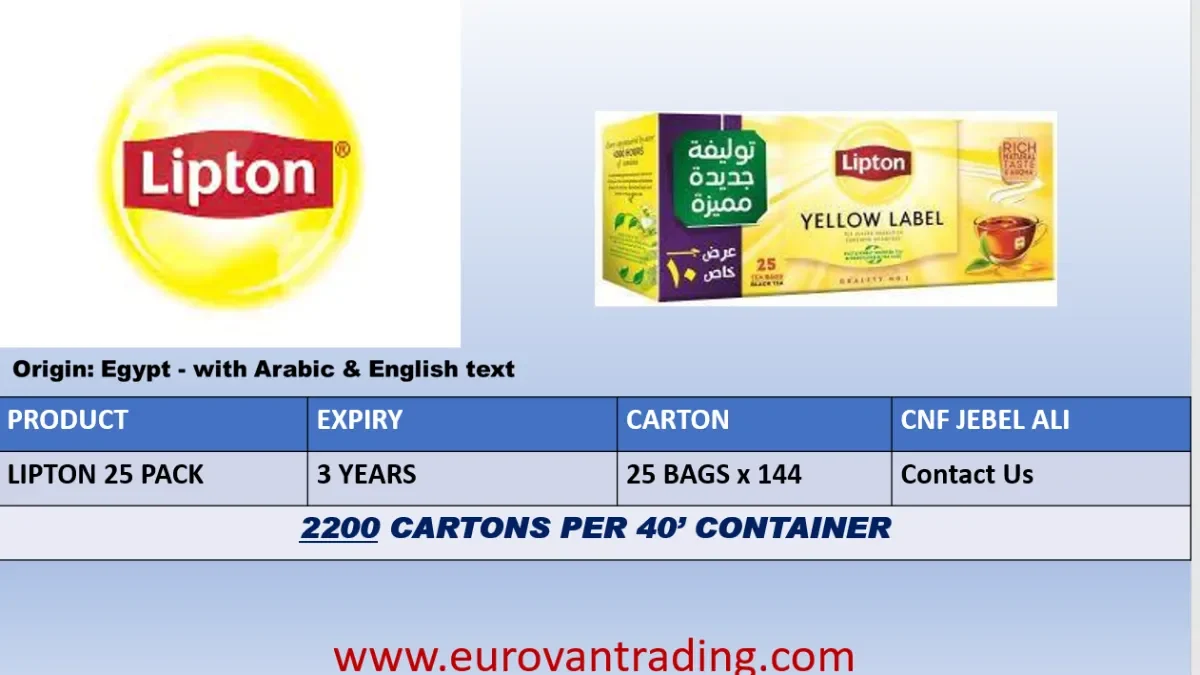How to cook Deja Egyptian rice – Egyptian rice dishes – Koshary – Rice Pudding – Health benefits of Egyptian rice – Egyptian rice nutrition
Introduction to Deja Egyptian Rice, Koshary, and Other Dishes
Egyptian rice plays a crucial role in the culinary traditions of Egypt and the Middle East. This medium-grain rice offers a unique texture and flavor. It enhances a variety of dishes, from savory mains like Koshary to sweet desserts like Rice Pudding. Deja Egyptian Rice not only delivers great taste but also provides health benefits. It promotes heart health, aids digestion, and supplies essential nutrients like B vitamins and magnesium. Including Deja Egyptian Rice in your meals enriches both flavor and nutrition.
Types of Egyptian Rice
Egyptian rice comes in various types, each suited to different culinary needs. Understanding these varieties helps you choose the best rice for your recipes.
Baladi Rice
Baladi rice is a short-grain variety that becomes slightly sticky when cooked. It works well in dishes like Mahshi, where the sticky texture helps ingredients bind together. Additionally, its rich, earthy flavor complements the robust spices in Egyptian cooking. Baladi rice is perfect when you need a dish with a cohesive texture.
Camolino Rice
Camolino rice is a medium-grain variety often coated with a thin layer of oil. This coating gives it a shiny appearance. It is less sticky than Baladi rice, making it ideal for dishes requiring fluffy, separated grains. Moreover, its subtle flavor pairs well with both savory and sweet dishes. Camolino rice offers versatility for many recipes.
Reis Rice
Reis rice, another medium-grain variety, holds up well in stews and stuffed vegetables. It maintains its shape while absorbing broths and sauces. This rice variety is perfect when you want distinct yet flavorful grains. Reis rice ensures your dishes have both texture and taste.
Calrose Rice
Calrose rice has become popular in Egyptian cuisine due to its versatility. It becomes slightly sticky when cooked, making it suitable for dishes needing cohesion. However, it also works well in recipes requiring fluffier rice. Its neutral flavor absorbs accompanying ingredients and spices easily. Calrose rice adapts well to both savory and sweet dishes.
Each type of Egyptian rice offers unique characteristics, making it suitable for various dishes. By choosing the right variety, you enhance your recipes with authentic taste and texture. Understanding these differences allows you to bring the best of Egyptian cuisine into your kitchen.

Cooking Deja Rice
Cooking Deja rice requires a delicate balance of technique and timing, as each step in the process plays a crucial role in achieving the desired texture and flavor. The quality of the final dish depends on how well you understand the unique characteristics of Egyptian rice, such as its medium-grain size and its ability to absorb flavors. By paying close attention to these details, you can ensure that the rice turns out perfectly fluffy and flavorful every time.
The key to mastering Deja rice lies in the careful selection of ingredients and the precise control of cooking temperatures. For instance, using the right amount of water or broth and cooking the rice at a consistent temperature can significantly enhance its natural qualities. Additionally, incorporating traditional methods, such as toasting the rice in ghee before boiling, can add depth and richness to the flavor profile. Adapting your cooking methods to suit the specific qualities of Deja rice not only preserves its authentic taste but also elevates your dishes, making them more enjoyable and true to the essence of Egyptian cuisine.
How to Cook Deja Egyptian Rice
Cooking Deja brand rice to perfection involves a few essential steps:
- Rinsing the Rice: Start by rinsing the rice under cold water. This step is crucial as it removes excess starch from the rice, preventing it from becoming too sticky during cooking.
- Soaking the Rice: Soaking the rice for about 20 minutes before cooking can significantly reduce the cooking time and ensure that the grains cook evenly. This step also helps in achieving a fluffier texture.
- Cooking the Rice: In a heavy-bottomed pot, heat some ghee or oil over medium heat. Add the drained rice and stir to coat each grain with the fat. This step adds a layer of flavor to the rice and helps keep the grains separate. Add water or broth (preferably vegetable or chicken broth for added flavor) and bring the mixture to a boil. Once boiling, reduce the heat to low, cover the pot, and let the rice simmer. Cooking times may vary, but typically, the rice should be ready in about 15-20 minutes.
Traditional Egyptian Rice Cooking Methods
Cooks often prepare Egyptian rice using traditional methods passed down through generations. These methods preserve authentic Egyptian flavors and enhance the rice’s natural qualities.
Roz Bel Shareya (Rice with Vermicelli)
Roz Bel Shareya is one of the most common ways to prepare Egyptian rice. First, lightly toast vermicelli noodles in ghee or oil until golden brown. Then, mix the noodles with the rice. Cook the mixture together with water or broth. The toasted vermicelli adds a nutty flavor and slight crunch, making it a favorite side dish in many Egyptian households.
Spiced Egyptian Rice
Another traditional method involves cooking the rice with aromatic spices like cinnamon, cardamom, and cloves. These spices infuse the rice with a warm, rich flavor that complements both meat and vegetable dishes. Some variations include adding nuts and dried fruits, such as raisins or apricots, for a sweet and savory balance.
These traditional methods highlight the versatility and rich flavors of Egyptian rice. Using these techniques allows you to bring authentic Egyptian cuisine into your own kitchen.

Popular Egyptian Rice Dishes
Egyptian rice is more than just a staple food; it is the star ingredient in many beloved dishes that showcase the rich culinary heritage of Egypt. Its unique flavor, texture, and versatility make it an essential component of numerous traditional recipes that have been passed down through generations. Whether it’s the comforting warmth of a homemade Koshary or the sweet delight of Roz Bel Laban (rice pudding), Egyptian rice plays a pivotal role in these dishes, bringing a sense of authenticity and tradition to every meal.
Egyptian Rice Recipes
Koshary: Often considered the national dish of Egypt, Koshary is a hearty and satisfying meal that combines rice, lentils, macaroni, and chickpeas, all layered together and topped with a spicy tomato sauce and crispy fried onions. The combination of textures and flavors in Koshary makes it a unique and flavorful dish that is both filling and nutritious. It’s a perfect example of how simple ingredients can be transformed into something extraordinary.
Roz Bel Laban (Rice Pudding): This classic Egyptian dessert is made by cooking rice slowly in milk until it becomes creamy and thick. The pudding is sweetened with sugar and flavored with vanilla or cinnamon. Roz Bel Laban is often served chilled, making it a refreshing treat, especially in the hot Egyptian climate. It’s a dish that brings comfort and nostalgia, often associated with family gatherings and festive occasions.
Egyptian Rice Dishes
Mahshi (Stuffed Vegetables): Mahshi is a popular dish in Egypt, consisting of vegetables like bell peppers, zucchini, and grape leaves stuffed with a mixture of rice, herbs, and spices. The stuffed vegetables are then cooked in a flavorful tomato sauce until tender. The rice absorbs the flavors of the sauce and herbs, creating a delicious and aromatic filling. Mahshi is often served as a main course, accompanied by yogurt or a simple salad.
Molokhia: Molokhia is a traditional Egyptian soup made from the leaves of the jute plant. The soup is typically served over rice, with a side of meat such as chicken or rabbit. The rice acts as a base that soaks up the thick, green soup, creating a dish that is both hearty and flavorful. Molokhia is a staple in Egyptian households and is known for its distinct, slightly bitter taste, which is balanced by the richness of the broth and the rice.
These popular Egyptian rice dishes highlight the versatility of rice in Egyptian cuisine, offering a range of flavors and textures that reflect the country’s rich culinary traditions.

Nutritional Information & Health Benefits of Deja Egyptian Rice
Deja rice is not just a culinary delight; it is also packed with essential nutrients that contribute to a healthy diet. Understanding the nutritional benefits of Egyptian rice can help you make informed choices about including it in your meals. The nutrition information of Egyptian rice reveals the numerous health benefits that make it a superfood.
Egyptian Rice Nutrition
Egyptian rice is a rich source of carbohydrates, which are the body’s primary source of energy. It also contains important vitamins and minerals, including B vitamins (such as niacin and thiamine), iron, and magnesium. These nutrients play a vital role in maintaining energy levels, supporting metabolism, and promoting overall health. The fiber content in Egyptian rice benefits digestive health and helps regulate blood sugar levels, making it a good choice for those managing diabetes.
Health Benefits of Deja Rice
The health benefits of Deja rice extend beyond its nutritional content:
- Heart Health Benefits: The low-fat content and the presence of essential minerals like magnesium and potassium help maintain healthy blood pressure levels and support heart function.
- Digestive Health Benefits: The fiber in Egyptian rice aids in digestion, helping to prevent constipation and promoting a healthy gut. It also supports the growth of beneficial gut bacteria, contributing to overall digestive well-being.
- Health Benefits of Being Gluten-Free: Egyptian rice is naturally gluten-free, making it a safe and nutritious option for individuals with celiac disease or gluten sensitivity. This makes it an excellent substitute for wheat-based grains in a gluten-free diet.
- Weight Management Health Benefits: The complex carbohydrates in Egyptian rice provide sustained energy and help keep you feeling full longer, which can aid in weight management. The moderate glycemic index of rice makes it a suitable option for those looking to control their weight.
Incorporating Deja Egyptian rice into your diet can provide multiple health benefits, supporting overall well-being while offering a delicious and versatile addition to your meals.

Purchasing Egyptian Rice
When purchasing Egyptian rice, it’s important to consider factors such as quality, origin, and availability. Whether you are looking for traditional varieties or organic options, there are many choices available to meet your needs.
Egyptian Rice Brands
Several reputable brands offer high-quality Egyptian rice that preserves the authentic flavor and texture:
- DEJA: DEJA is a leading brand known for its premium quality rice. The brand offers a variety of Egyptian rice types, all sourced from the best rice-growing regions in Egypt. DEJA’s commitment to quality ensures that each grain of rice is carefully selected and processed to maintain its natural taste and nutritional value.
- EUROFOOD: EUROFOODS is another well-known brand that offers a wide range of Egyptian rice products. The brand is popular for its consistency in delivering high-quality rice that cooks evenly and tastes great. Whether you’re making a savory dish like Koshary or a sweet treat like Roz Bel Laban, EUROFOODS rice is a reliable choice.
Buy Egyptian Rice Online
In today’s digital age, buying Egyptian rice has never been easier. Several online platforms offer a wide selection of Egyptian rice, delivered right to your doorstep:
- Amazon: Amazon offers a comprehensive range of Egyptian rice brands, with options for every taste and preference. From traditional varieties to organic selections, you can find the perfect rice for your needs with just a few clicks.
- Local Middle Eastern Stores: Many Middle Eastern grocery stores now offer online shopping, allowing you to purchase authentic Egyptian rice from the comfort of your home. These stores often carry specialty products that may not be available in mainstream supermarkets.
- Direct from Egypt: Deja Premium Egyptian Rice is generally priced between $1,000 and $1,500 per metric ton FOB, with the final price influenced by factors such as packaging and order volume. Larger orders and bulk packaging tend to result in even more competitive rates. Deja Premium Egyptian Rice provides a cost-effective option within the premium rice segment, offering outstanding value for money. Its authentic flavor and nutritional benefits make Deja a preferred choice for those who prioritize quality at a reasonable price.
By choosing the right brand and purchasing method, you can enjoy the rich, authentic taste of Egyptian rice in your own home, whether for everyday meals or special occasions.
Sources
Food and Agriculture Organization of the United Nations (FAO) – Rice Market Monitor
The FAO provides detailed reports and data on global rice production, including insights specific to Egyptian rice.
International Rice Research Institute (IRRI)
- Offers insights into the global importance of rice, including quality standards, cooking methods, and its role in nutrition.
- IRRI – International Rice Research Institute
Special Recipes
Egyptian rice is a versatile ingredient that can be used in a wide range of dishes, from savory mains to sweet desserts. Here are some special recipes that highlight the unique qualities of Egyptian rice.
Rice Pudding
Rice Pudding, also known as Roz Bel Laban, is a creamy and comforting dessert that is easy to make and loved by all.
Ingredients:
- 1 cup Egyptian rice
- 4 cups milk
- 1 cup sugar
- 1 tsp vanilla extract
- 1 tbsp butter
- Ground cinnamon for garnish
Instructions:
- Rinse and Soak the Rice: Begin by rinsing the rice under cold water to remove excess starch. Soak the rice for about 20 minutes.
- Cook the Rice in Milk: In a large pot, bring the milk to a simmer over medium heat. Add the soaked rice and cook, stirring frequently, until the rice is tender and the mixture thickens. This process may take 30-40 minutes.
- Add Sweeteners: Stir in the sugar, vanilla extract, and butter. Continue cooking until the sugar is fully dissolved and the pudding reaches the desired consistency.
- Serve and Garnish: Pour the rice pudding into serving bowls and garnish with ground cinnamon. Serve warm or chilled.
Egyptian Koshary
Koshary is a beloved Egyptian street food that combines rice, lentils, macaroni, and chickpeas, topped with a zesty tomato sauce and crispy onions.
Ingredients for making Koshary:
- 1 cup rice
- 1/2 cup brown lentils
- 1/2 cup macaroni
- 1/2 cup chickpeas (cooked)
- 1 large onion, thinly sliced
- 2 cups tomato sauce
- 1 tsp cumin
- 1 tsp coriander
- Salt and pepper to taste
- Oil for frying
Instructions for making Koshary:
- Cook the Components: Cook the rice, lentils, and macaroni separately according to their package instructions. Drain and set aside.
- Prepare the Sauce: In a saucepan, heat the tomato sauce with cumin, coriander, salt, and pepper. Simmer for 10 minutes to allow the flavors to meld.
- Fry the Onions: In a skillet, heat the oil over medium heat. Add the sliced onions and fry until golden brown and crispy. Drain on paper towels.
- Assemble the Koshary: In a large serving dish, layer the rice, lentils, and macaroni. Top with chickpeas and fried onions. Pour the tomato sauce over the top just before serving.
- Serve: Koshary is best enjoyed fresh and warm, but it can also be reheated the next day, making it a versatile dish for meal prep.
Conclusion
Rice is more than just a staple food; it’s a reflection of the rich culinary heritage of Egypt. Deja Egyptian Rice’s versatility, nutritional benefits, and ability to absorb a wide range of flavors make it an essential ingredient in both traditional and modern dishes. Whether you’re making a savory dish like Koshary or a sweet dessert like Roz Bel Laban, Egyptian rice offers endless possibilities in the kitchen.
When selecting your rice, choosing trusted brands like DEJA ensures that you’re getting the best quality for your culinary creations. The unique flavors and textures of Egyptian rice have earned it a place in the hearts of many, making it a must-have in any kitchen.
So, whether you’re exploring new recipes or perfecting traditional ones, rice is sure to add a touch of authenticity and flavor to your meals. Embrace the rich history and diverse possibilities of Deja rice, and enjoy the culinary journey it offers.
“Experience the authentic taste of Egypt with our premium Egyptian rice—perfectly crafted for your favorite traditional dishes.” Discover more.





